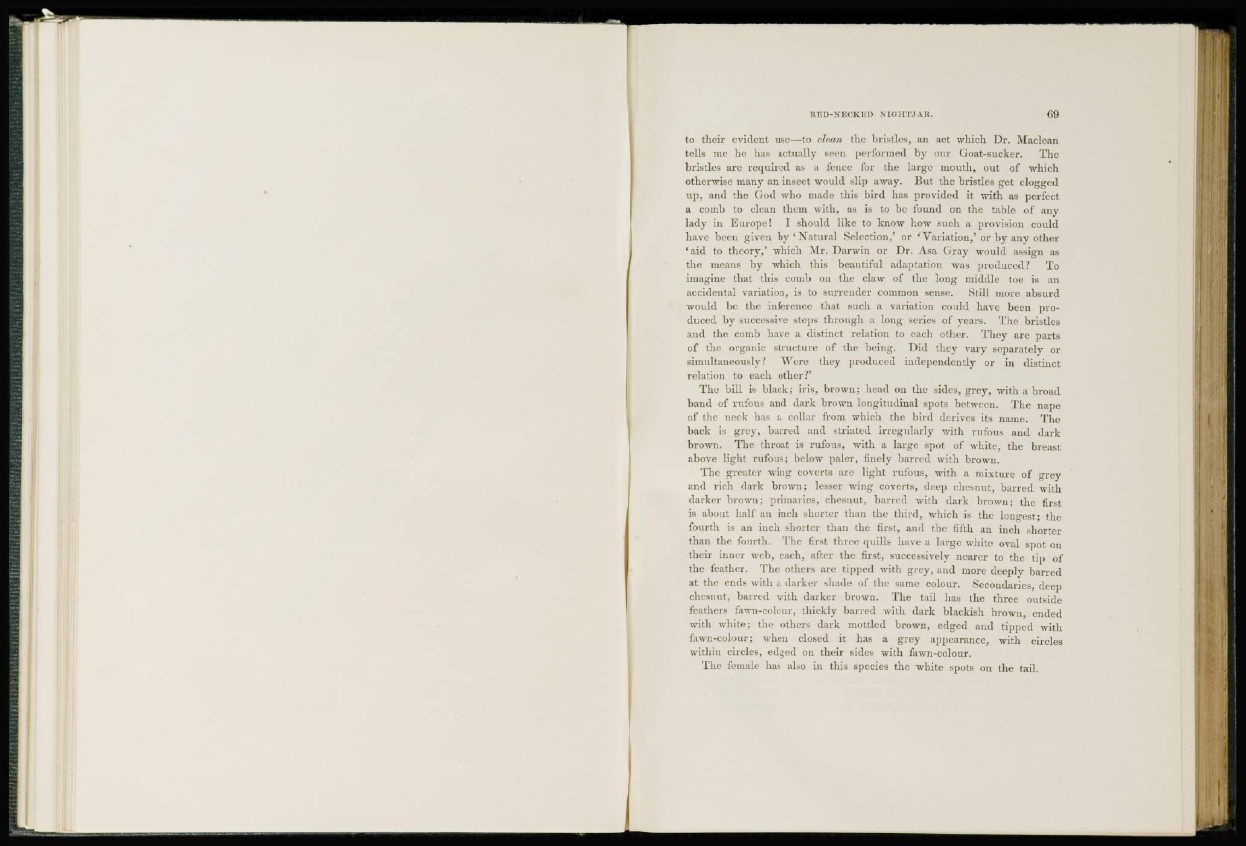
to their evident use—to clean the bristles, an act which Dr. Maclean
tells me he has actually seen performed by our Goat-sucker. The
bristles arc required as a fence for the large mouth, out of which
otherwise many an insect would slip away. But the bristles get clogged
up, and the God who made this bird has provided it with as perfect
a comb to clean them with, as is to be found on the table of any
lady in Europe! I should like to know how such a provision could
have been given by'Natural Selection,' or 'Variation,'or by any other
'aid to theory,' which Mr. Darwin or Dr. Asa Gray would assign as
the means by which this beautiful adaptation was produced Í To
imagine that this comb on the claw of the long middle toe is an
accidental variation, is to surrender common sense. Still more absurd
would be the inference that such a variation could have been produced
by successive steps through a long series of years. The bristles
and the comb have a distinct relation to each other. They arc parts
of the organic structure of the being. Did they vary separately or
simultaneously i Were they produced independently or in distinct
relation to each other?'
The bill is black; iris, brown; head on the sides, grey, with a broad
band of rufous and dark brown longitudinal spots between. The nape
of the neck has a collar from which the bird derives its name. The
back is grey, barred and striated irregularly with rufous and dark
brown. The throat is rufous, with a large spot of white, the breast
above light rufous; below paler, finely barred with brown.
The greater wing coverts are light rufous, with a mixture of grey
and rich dark brown; lesser wing coverts, deep chesnut, barred with
darker brown; primaries, chesnut, barred with dark brown; the first
is about half an inch shorter than the third, which is the longest; the
fourth is an inch shorter than the first, and the fifth an inch shorter
than the fourth. The first three quills have a large white oval spot on
their inner web, each, after the first, successively nearer to the tip of
the feather. The others are tipped with grey, and more deeply barred
at the ends with a darker shade of the same colour. Secondaries, deep
chesnut, barred with darker brown. The tail has the three outside
feathers fawn-colour, thickly barred with dark blackish brown, ended
with white; the others dark mottled brown, edged and tipped with
fawn-colour; when closed it has a grey appearance, with circles
within circles, edged on their sides with fawn-colour.
The female has also in this species the white spots on the tail.